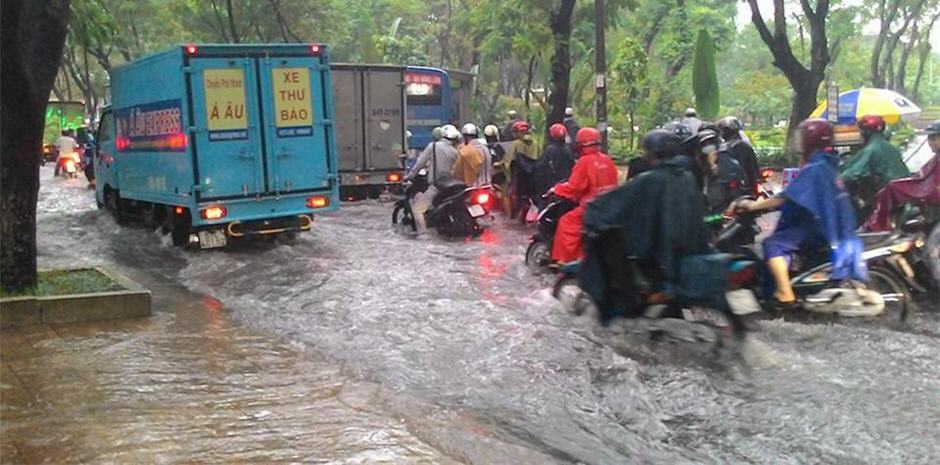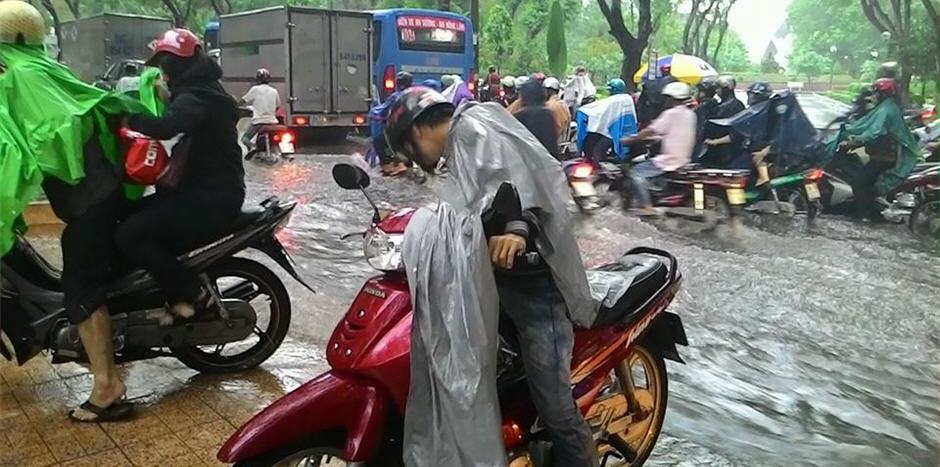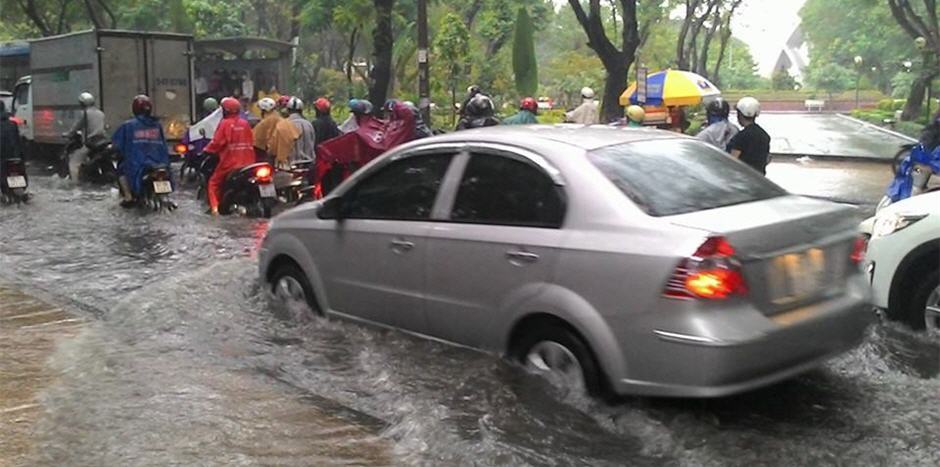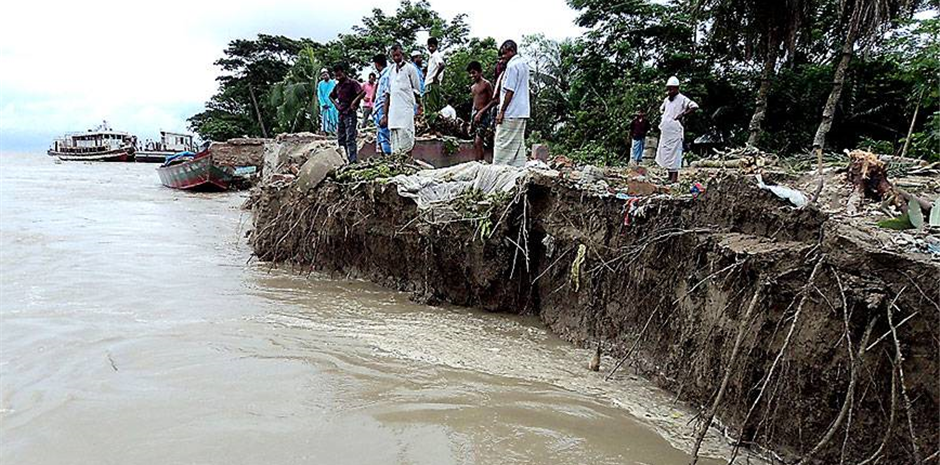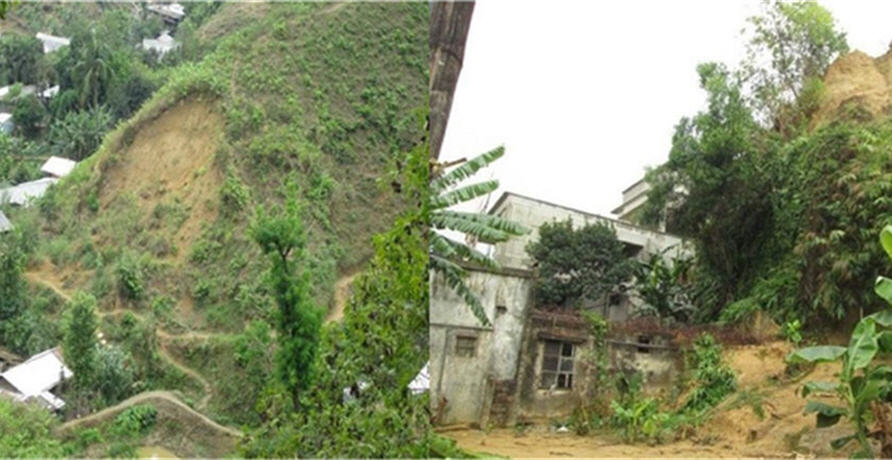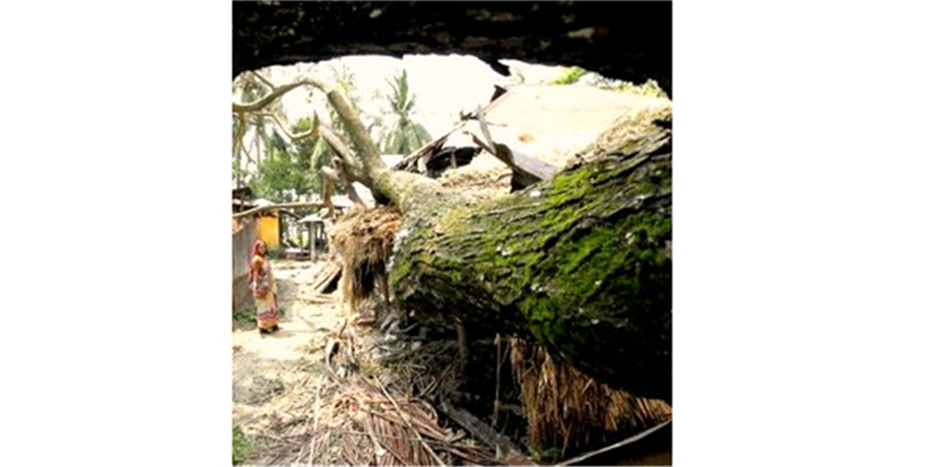Urban Flooding in Ho Chi Minh City
Chittagong, Bangladesh
Ho Chi Minh is known as the most urbanized and biggest city of Vietnam. This modernization gives citizens lots of benefit but we also have to pay high price. With the development of economy and urbanization, most research recently shows that this city has to suffer effects of different problems.
One of them is urban flooding, a disaster in Ho Chi Minh City (HCMC).
In this article, we will analyze the causes, consequences and outline some solution to solve the problem of urban flooding in HCMC.
Urban flooding is the inundation of land or property in a built environment, caused by rainfall overwhelming the capacity of drainage systems, such as storm sewers. It often happens in rainy season from September to December, especially in heavy rainy days.
Urban flooding is increasing more significantly, affects a lot of aspects including public health, environment, economic and traffic in HCMC. This disaster is caused by geographic location of HCMC and rapid urbanization. Therefore, every resident of HCMC has to take responsibility for solving this disaster.
The first reason of urban flooding is geographic location of HCMC. Vietnam belongs to tropical climate area, so the average rainfall of HCMC is more than countries from other areas. In the rainy season, the average rainfall amount is about 1,800 millimeters. In addition, the surfaces of some areas in HCMC are lower than sea level from 0.5 – 1 m above sea level. Therefore, when it’s raining heavily, urban flooding is more serious in these areas.
Monsoon is also one of reasons causing flooding, especially in low-lying areas. Additionally, ICEM predicts that sea level rise with average rate of 0.5 cm/year would endanger 60% of HCMC in 2050.
People can't blame all the damages for nature because urbanization is also one of main factor causing this disaster. HCMC, the center of industry, commerce, and science of Viet Nam, is attracting more and more people from other regions coming for jobs. This leads to the fast population increase.
In response to the economic development, residential areas such as buildings, infrastructures have been built densely in replacing for dam drainages, rivers, lakes which contains rain water. Many new streets have not had drainage systems yet.
In addition, areas of forests have been reduced because of development of industry so water can’t be absorbed into the ground.
According to Beth Gardiner, a London-based freelance journalist covering environment, energy and sustainability: “HCMC's flooding problems are likely to get worse as the impact of climate change intensifies and the city's fast growth continues; its population of roughly 8 million is expected to reach 12 million by 2020. One third of HCMC suffers regular flooding now, and if expansion into low-lying areas continues unchecked, two-thirds could be vulnerable in a decade”.
Urban flooding affects HCMC in environment, public health, economy, and traffic aspects. During flood, industrial and domestic wastes are drifted by flood water, causing water pollution and many diseases such as skin allergy, cholera, dysentery, especially dengue fever.
According to Dr. Nguyen Dac Tho- Deputy Director of the HCMC Center for Preventive Medicine: "Environment of the city is worsening by the pollution caused by industrial waste and domestic waste. When the rainy season comes, the pollution associated with stagnant water will create favorable conditions for mosquitoes to reproduce ".
Remarkably, from 2013, the Hospital for Tropical Diseases in HCMC has received more than 3,000 cases of dengue fever. (Dengue fever cases increase in southern region).
Additionally, urban flooding also affects the economy. It damages houses, infrastructure, and blocks many economic activities of people. The conference held in November 11th, 2013 by Ministry of Agriculture and Rural Development (MARD) and World Bank (WB) estimated total damages of economy caused by urban flooding in HCMC about 5000 billion VND approximate 238 million USD.
Urban flooding also increase traffic jams as people face more travelling problem in rainy days. They have to spend more time in travelling and sometimes wade to work. For evidence, more than 100 serious flooded locations, including many in the city center, were reported that after one single heavy rainfall event (127 mm) on May 16 in 2004, causing prolonged traffic jams as thousands of motorcycles were broken down, causing traffic jams.
Vo Van Khanh, a resident of Binh Tan District’s Binh Hung Hoa A Ward said: “My motorbike broke down in a seriously flooded An Duong Vuong Street this morning, despite the fact that the rain had stopped four hours ago."
Not only urban flooding happens in a few years, but also ongoing every year with a severe and denser degree.
Therefore, the solution can’t just be temporary but must be durable, long-term, and carried out by tight combination between the government and citizens and between citizens. A lot of plans are done to help HCMC peoples. For instance, a project to prevent river erosion and improve drainage systems in 2014 was carried out by Steering Board for Flood and Storm Prevention and Control.
The board instructed the district officials and residents to take actions to cope with flooding: “District People's Committees are responsible for speeding up the construction works prevention and river erosion, dredging drainage was carried out from 2009 to date, early finish to put to use in rainy season this year; investment proposals for construction of embankments prevention tide combined rural communication, prevention and river erosion, dredging drainage 2014”.
Information about flooding is also provided promptly on newspapers and internet. Raising fund to compensate for serious damages caused by flood is also a useful solution as helping others in need is a good tradition of Vietnamese.
To minimize the damages of urban flooding in HCMC, the government should have more realistic and comprehensive plans such as investing for completing drainage system and construction works as soon as possible, informing the residents about flooding before-hand accurately. The effective combination of all above solutions will solve the problem of urban flooding in HCMC absolutely.
In conclusion, residents of HCMC have to face serious effects of urban flooding regularly. Therefore, solutions for this disaster have to be implemented as soon as possible by cohesive effort of the government and the residents of HCMC.
